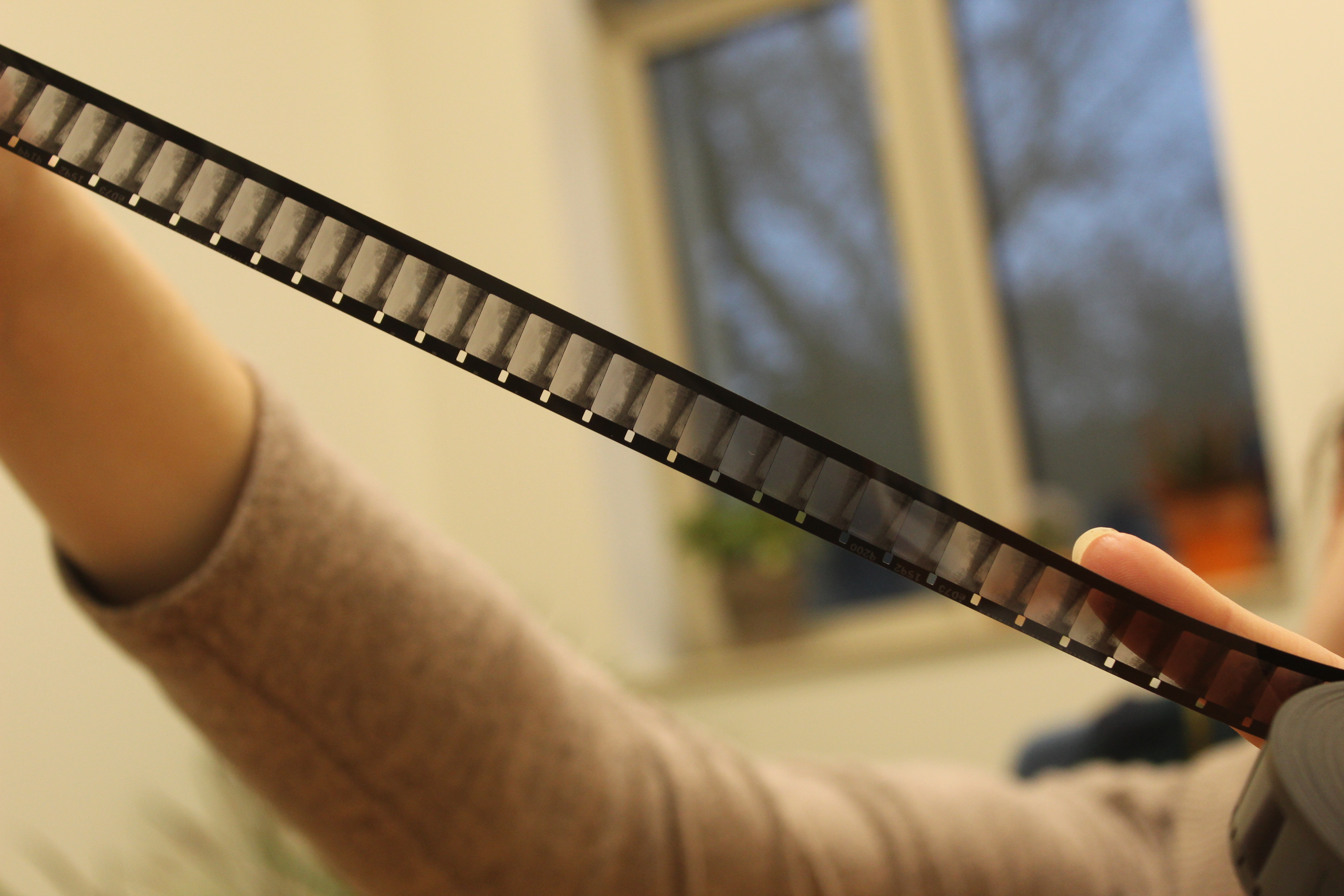There are a lot of choices that go into making movies, and these choices can affect the entire production process and how the movie turns out.
One of the core choices is deciding whether or not to shoot on physical film or digital video, but what’s the difference?
When somebody says that a movie was shot on film, it means that the director captured scenes using a real-life, physical film strip that was spooled into a compatible camera.

A film strip is a paper-thin piece of celluloid, with tiny individual images running in a sequential order. Run that strip really fast through a projector, and voilà, you’re watching a movie.
Famed directors Christopher Nolan and Quentin Tarantino are known for using film to capture their stories before projecting them at the highest quality possible, which is 70mm at this point in time.
Film stock can be bought in various different sizes, or gauges. The higher the millimeter, the wider and crisper the image, but it could also mean paying more money.
Nowadays, many independent filmmakers and a good portion of the movie industry have switched to shooting on digital, which is when movie scenes are instantaneously captured onto a video file instead of physical celluloid.
But which one is better?
Jim Higgins is a film professor who has been an independent filmmaker since 1998, which was around the advent of digital shooting techniques.

“While I was getting my bachelor’s degree, we started the shift over to digital,” Higgins said. “I shot a feature-length film on digital around 1999, 2000.”
Prior to that, Higgins primarily made movies using celluloid film of various gauges, including 8mm, 16mm, and 35mm.
Higgins believes that film is a language, and that celluloid gives off a certain aesthetic that is visually-appealing to the audience.
Those factors, along with the 24 frames per second (fps), is just satisfying, even if audiences don’t know why.
Some say it’s an experience that digital can’t fully capture. That’s why movies such as The Hobbit (2012), which ran at 48 fps during certain shows, can look jarring at first, and almost fake.
For Higgins though, the deciding factor on whether or not to shoot on film comes down to money.
“As an independent filmmaker, it’s not cost effective to shoot on celluloid because you have to pay for the film, pay for the film to get processed, and then you have to pay for the film to get digitized in order to edit because we just don’t have moviolas sitting in our homes,” Higgins said.
A moviola is a core tool for a movie editor that is editing a strip of film that has not been digitized. This is serious old school editing.
Old school film editing was a true discipline. When you cut an actual strip of film, there’s no going back from it.
It’s not as if you can undo your changes like you can in Adobe Premiere when you’re editing a digital video file.
So far, it sounds like shooting on film can be quite challenging as compared to digital, but that’s why many filmmakers love this particular process in the first place.
“It really forces you to be serious about what you’re doing,” Sabrina Renkar, a film and media professor, said.
“Within the digital realm, while there’s so many amazing things that can be done, there are things that are getting lost because it’s easier,” Renkar said.

When shooting digitally during the production process, you might be prone to brush off small errors and worry about fixing it in post-production.
When shooting with film, it’s a lot less forgiving because you run the risk of ruining expensive film with bad footage, but this can make you grow as a filmmaker.
“At the end of the day, a good story can be told in any medium,” Renkar said. “We need to preserve classic film history. We need to embrace the innovations, but what we need to make sure that we don’t lose in this debate, is the thing that film and video storytelling does, which is to preserve humanity.”

